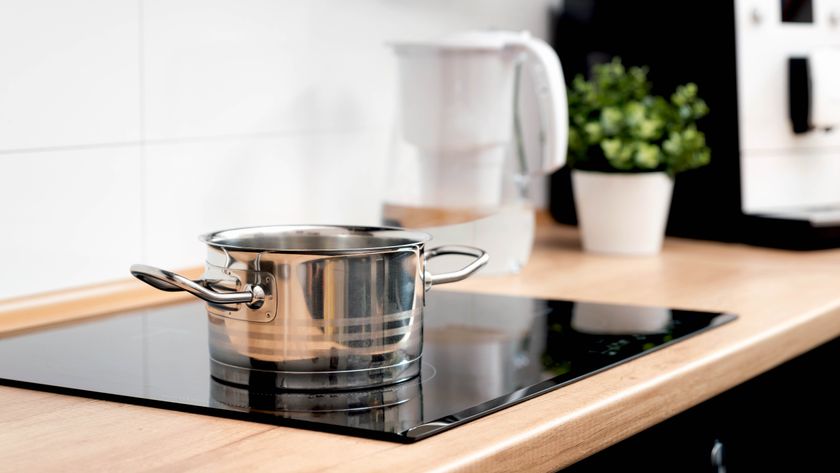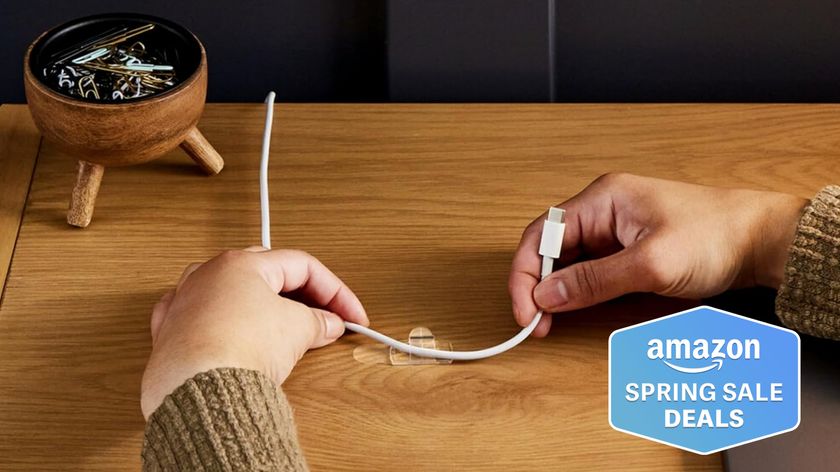5 things I learned after testing cutting boards — and how to choose one
Because a good cutting board can make all the difference

It’s a simple, cooking essential that we often take for granted, but investing in one of the best cutting boards can make all the difference to mealtime prep. Even if you have all the fancy gadgets to make your prep-work easier such as the best food processors, nothing could ever replace the underrated cutting board.
I discovered how worthy these humble tools are after testing varying types and sizes for a month. From dicing onions and vegetables to slicing raw meat, I put my cutting boards to good use to see how well they handled everyday jobs. And while it may seem like a simple and quick task (after all, it’s just a board, right?), there are actually several things to consider when choosing a cutting board.
So, here are five things I learned after testing cutting boards for a month that everyone should consider before buying.
1. Don’t let a cutting board slip up

A flat and sturdy cutting surface is a must, so look for a cutting board with non-slip pads for extra security. These will ensure the board doesn’t slide across the countertop while you’re slicing and dicing. Not only is this an accident waiting to happen while using a sharp knife, but can also affect the time it will take for your chopping tasks. While it’s strange that this isn’t a standard design feature across all boards, check your cutting boards have a firm surface grip. In addition, textured surfaces have a much better grip whilst cutting than smooth surfaces.
TIP: Alternatively, if your best cutting board doesn’t come with non-slip pads, place a kitchen towel underneath it to prevent any movement.
2. Juice grooves will catch messy drips

While most cutting boards are completely flat, consider wooden boards with juice grooves around the edges. These clever indentations will catch any food liquid from your chopping tasks before they run over the edge. If you often cut up fresh fruit, vegetables and raw meat, this will save you the hassle of cleaning up spills or sticky mess on the countertop.
3. All cutting boards are not created equal

Cutting boards come in a variety of material types and sizes, so it’s important to know which material would suit your cooking regime. Wooden, bamboo and rubber boards are more heavy-duty, better for your knives and last longer. Wooden boards also ‘self heal’, meaning the fibres on the surface bounce back after a knife’s edge. But this all depends on proper care and treatment after use with a protective mineral oil.
Rubber is solid and non-porous but can be prone to staining. Although, they can be sanded down and resurfaced like wooden types. Food-grade silicone (or folding) cutting boards are more flexible, heat and bacteria resistant, while plastics (polypropylene) are easy to maintain and clean. However, these are not heat-resistant and can easily scratch. Also, size matters when it comes to cutting boards. You don’t want to buy a small board for carving cooked meats or chopping large quantities.
4. They can weigh a ton

If you’re planning on buying a quality wooden or rubber cutting board, it’s worth noting these are extremely heavy. I found it a struggle when lifting and carrying the boards over to the counter or to sink wash. So bear in mind when you’re thinking about cleaning and storage. Also, will it even fit in your sink? Since you can’t throw heavy-duty boards into the dishwasher, consider its size and how convenient it will be to wash properly after use. If you’re after something lightweight and more practical to move around, you’re better off going for wood-fibre or plastic boards.
5. Is the cutting board knife-friendly?

If you’re a keen cook and have your favorite set of kitchen knives, you’ll need to make sure they don’t get ruined. If you want to protect your best kitchen knives, stick with wood or plastic cutting boards to keep knives looking sharp! Avoid using glass, marble, granite, or Corian cutting boards, as these hard surfaces will quickly blunt your best knives. In which case, you may want to check out how to sharpen a knife to make them last longer.
Cleaning tips when using a cutting board

- Always treat wooden cutting boards with a protective mineral oil after cleaning. This will protect the surface from daily wear-and-tear.
- Don’t soak a cutting board in water. It’s fine to wash in hot, soapy water, and quickly rinse off. Soaking can cause the board to warp.
- To remove stubborn stains, sprinkle baking soda over the cutting board, rub with a warm, damp cloth, before rinsing any excess baking soda.
- If your cutting board is smelly from foods such as fish or other strong odors, cut a lemon in half and rub it over the surface. Leave to sit for around two minutes before wiping off with a clean damp cloth.
If you want to know more about the cleaning powers of citrus, here are 9 things you didn’t know you could clean with a lemon.
And these are the 10 things you didn’t know you could clean with baking soda. It’s also essential to know what is the best type of vinegar you can clean with and how to clean with vinegar without the smell.
Sign up to get the BEST of Tom's Guide direct to your inbox.
Get instant access to breaking news, the hottest reviews, great deals and helpful tips.

As the Homes Content Editor, Cynthia Lawrence covers all things homes, interior decorating, and garden-related. She has a wealth of editorial experience testing the latest, ‘must-have’ home appliances, writing buying guides and the handy ‘how to’ features.
Her work has been published in various titles including, T3, Top Ten Reviews, Ideal Home, Real Homes, Livingetc. and House Beautiful, amongst many.
With a rather unhealthy obsession for all things homes and interiors, she also has an interior design blog for style inspiration and savvy storage solutions (get rid of that clutter!). When she’s not testing cool products, she’ll be searching online for more decor ideas to spruce up her family home or looking for a great bargain!
























